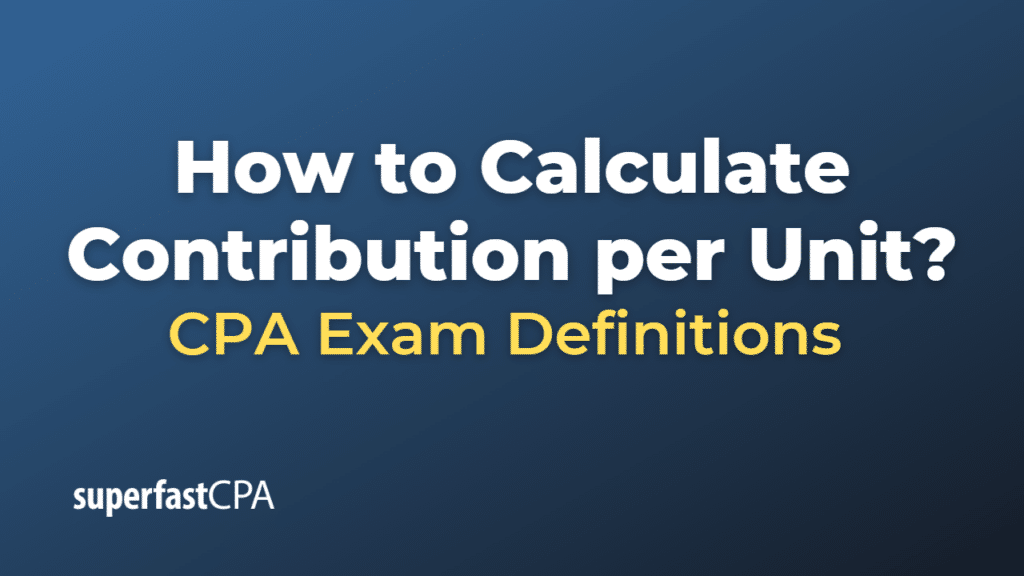How to Calculate Contribution per Unit
The contribution per unit measures the profitability for each item sold, representing how much each unit contributes to covering fixed costs and then to profit.
It is calculated by subtracting the variable cost per unit from the selling price per unit.
Here is the formula:
Contribution Per Unit = Selling Price Per Unit – Variable Cost Per Unit
The “Selling Price Per Unit” is how much the product is sold for.
The “Variable Cost Per Unit” includes costs that change directly with the amount of units produced, such as raw materials and direct labor.
So, when you subtract the Variable Cost Per Unit from the Selling Price Per Unit, you’re left with the amount of money that each unit contributes to covering fixed costs. After fixed costs are covered, each unit then contributes to profit.
This is a crucial calculation for determining break-even points and for making decisions about pricing and production levels.
Example of How to Calculate Contribution per Unit
Let’s consider a company that produces a product with the following details:
- Selling Price per unit: $80
- Variable Cost per unit: $45
We can calculate the Contribution Per Unit as follows:
Contribution Per Unit = Selling Price Per Unit – Variable Cost Per Unit
= $80 – $45
= $35
This means that for each unit of the product sold, $35 contributes towards covering the company’s fixed costs, such as rent and administrative salaries. Once those fixed costs are covered, the contribution per unit goes towards profit.
If the company were to sell 1,000 units of this product, for example, it would contribute $35,000 towards covering fixed costs and generating profit.













